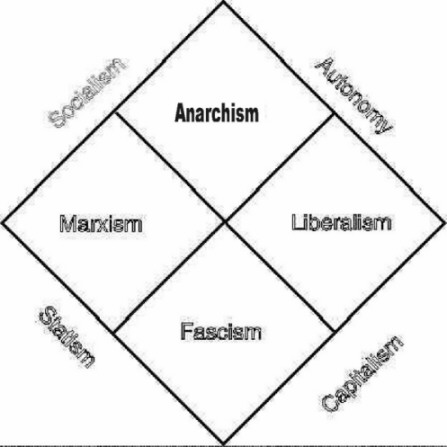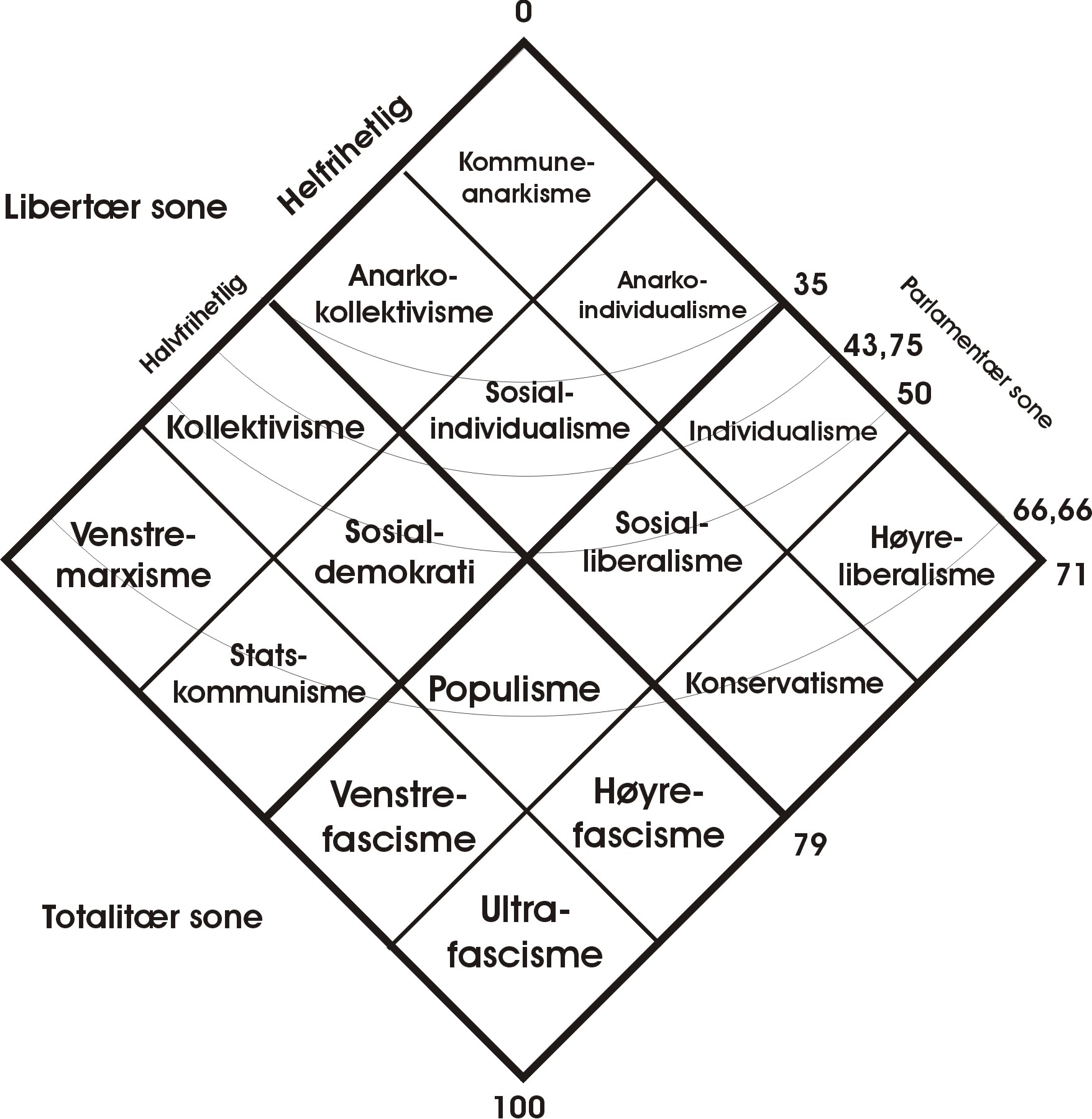
THE ANARCHIST INTERNATIONAL
www.anarchy.no
INTERNATIONAL INSTITUTE FOR ORGANIZATION RESEARCH
http://www.anarchy.no/iifor.html - IIFOR P.B. 4777 Sofienberg N- 0506 Oslo - Norway
Anarchist support for national liberation movements?
1. Anarchy and anarchism mean "system and management without ruler(s), i.e. co-operation without repression, tyranny and slavery". In short an-arch-y = [(an = without - arch = ruler(s)) - y = system (included optimal order and law) and management, as, say, in monarch-y]. Anarchy and anarchism are efficient and fair system and management without top heavy societal pyramid economical and/or political/administrative - in income and/or rank, i.e. significant horizontal organization - real democracy.
2. Authoritarians notoriously mix up anarchy, anarchist and anarchism with authoritarian tendencies: Chaos, disorder, mob rule (narrowly defined), lawlessness, the law of the jungle, criminality, riots, theft, corruption, drugs, mafia, terrorism, autocratic rule, the right to the strongest, antisocial tyrannical behavior, etc. i.e. different types of superiors and subordinates, all in all ochlarchy (mob rule broadly defined).
3. The word anarchy origins from Greek. The prefix "an" means "negation of" as in anaerobe versus aerobe and "arch" means "superior, i.e. in contrast to subordinates", as in archbishop, archangel, archduke, arch villain, etc. NB! Any villain, ochlarch/ist, is an arch vis-a-vis the victims. Thus anarchy, anarchism, anarchist, a.s.o., mean coordination on equal footing, without superiors and subordinates, i.e. horizontal organization and co-operation without coercion - practically (significant) or ideally (towards 100% anarchy degree). This is the opposite of the above mentioned authoritarian tendencies, i.e. different types of superiors and subordinates - in general ochlarchy. In general, x-archy, where x can be anything but not 'an', is the opposite of freedom and real democracy, i.e. anarchy.
4. Anarchists are not only against ochlarchy, but also monarchy, oligarchy, polyarchy, plutarchy, matriarchy, patriarchy, hierarchy, etc., i.e. in real terms, economic and/or political/administrative. Anarchists mean all forms of archies should be done away with, practically toward ideally.
5. The economic-political map. This scientific valid map practically always matches the economic-political terrain, i.e. reality.

100% - the libertarian/anarchist degree = the authoritarian degree =
 "
"

Fig. 1. Picture of the Anarchist Economical-Political Map
A mathematical precisation of the map is presented at the Formula of anarchism. For practical statistical methods of estimation of the authoritarian degree etc. see the chapter V. B. at System theory and economic-political map. NB! We usually have used " , ", the European standard instead of American/UK standard, i.e. " . " as decimal separator. The term "ca" is an abbreviation for the latin circa, which means about or approximately.
The star(s) [ * ] indicate the position of the Norwegian economical-political system after the revolutionary change in 1994/95, i.e. at ca 53% anarchy degree. Read more about it at Anarchy in Norway and IJA 1994-96. The Norwegian system of today is placed just above the star(s) with ca 54% degree of anarchy. It has been and is an anarchist social-individualist system in Norway since 1994/95. This means an anarchy of low degree in Norway, "anarchist light", in the sector of social-individualism, within the Quadrant of Anarchism, between advanced marxist social democracy and advanced social-liberalism, seen in international perspective. See (click on:) IJA 1 (37).
The anarchy degree = 100 % - the authoritarian degree, within the anarchist quadrant. In general the term libertarian degree = 100 % - the authoritarian degree is used. As an example, Norway is an anarchy, and has an anarchy degree equal to the libertarian degree. Sweden, which is not an anarchy, only has a libertarian degree, not an anarchy degree, because it is located outside the anarchist quadrant on the EP-map. Thus, in general the term libertarian degree = 100 % - the authoritarian degree is used. If this falls within the anarchist quadrant, we also call it the anarchy degree.
Progressive means upwards on the map, the vertical axis that can be drawn through the middle point of the map is the progressive vs reactionary axis. Reactionary means statism and capitalism. Progressive means autonomy and socialism. The horizontal axis that can be drawn through the middle point of the map represents the traditional left vs right dimension in politics.
6. Concepts related to the EP-map.
a) Autonomy = Significant political/administrative freedom and significant political/administrative self-management and self-administration plus grassroots influence on de facto policy. Significant horizontal political/administrative organization - real political/administrative democracy. A political/administrative "bottom up" approach. Significant political/administrative efficiency and fairness. The opposite of statism.
b) Socialism = significant economic freedom, equality and real economic democracy. Significant flat, horizontal economic organization. An economic "bottom up" approach. Significant economic efficiency and fairness. The opposite of capitalism.
c) Capitalism = significant economical plutarchy, i.e. rule by the rich - the rich are rulers, economical hierarchy and/or lack of economic freedom. Top heavy economic pyramid - lack of economic efficiency and/or fairness. An economic "top down" approach. The opposite of socialism.
d) Statism = significant political/administrative hierarchy, top heavy political/administrative pyramid and/or lack of political/administrative freedom. A political/administrative "top down" approach - lack of political/administrative efficiency and/or fairness. The opposite of autonomy.
7. The State broadly defined as a societal concept. The State as a broad societal concept is archy, i.e. x-archy, where x can be anything but not 'an', that is top heavy political/adminstrative and/or economical societal pyramid (vertical organization). Statism is one dimension of the State and economical plutarchy, i.e. capitalism, the other. The State may also be an ochlarchy, etc. The State = government = authority/ies = archy must not be mixed up with public sector and the central administration. The public sector and the central administration, often wrongly called state or government or authority/ies in Orwellian "1984" newspeak, if significantly horizontally organized, i.e. without top heavy pyramid, are anarchist. A well functioning public sector and central administration are necessary for anarchy and anarchism. The State may be present in several forms both in private and public sector. Anarchists are against the State in general, both in public and private sector.
8. National liberation movements. Only if national liberation struggle will result in a significant increase in the libertarian/anarchist degree, the anarchists may support it (see map above). In general, unless special cases, this will not happen, because the purpose of a national liberation movement is in reality very often to establish a State, with no significant increase in the libertarian degree. Thus in general anarchists don't support national liberation struggles.
To see if we have a special case we must analyze carefully. What happens to the libertarian degree of the people directly and concretely concerned, say, the people of a country that is going to split up? The people here seen as a class as opposed to the superiors economical and/or political/administrative, i.e. in income and/or political/administrative rank. A special case may occur if a totalitarian State is splitting up (see map above) and (a part) is moving in real democratic direction on the map and in reality. Anyway, the struggle should be without ochlarchy, anarchists don't support ochlarchists.
Autonomy is however an important anarchist principle. Anarchists may support a confederalist solution for national liberation movements if the struggle is without ochlarchy, similar to in the Swiss Confederation. Switzerland has a highly decentralized public sector, with regional administrations/countries, known as cantons, having a significant amount of autonomy. More information: see (click on) Federalism and Direct Democracy - The Swiss Confederation.
An example of the general case is the national liberation movement for an independent State in Catalonia in 2017/18, which has no support from the Anarchist International. Similar with the Kurdish nationalist movement and most other nationalist movements all over the world today. An example of the special case is the breakaway revolution of Norway from Sweden in 1905, which resulted in a significant shift in libertarian degree in positive direction. Anarchists are internationalists, not nationalists or supra-nationalists. Furthermore, anarchist resources are limited, and should be used mainly on anarchism, i.e. for socialism and autonomy and against capitalism (economical plutarchy) and statism - and thus not on support for marxism, fascism or liberalism, i.e. State (see map above).
Resolution, decided with general consent, by:
The International Anarchist Congress
The 15th Anarchist Biennial 23-25.11.2018
International Congress-Seminar on Anarchism
The AI/IFA network represents more than 50 000 anarchist world wide